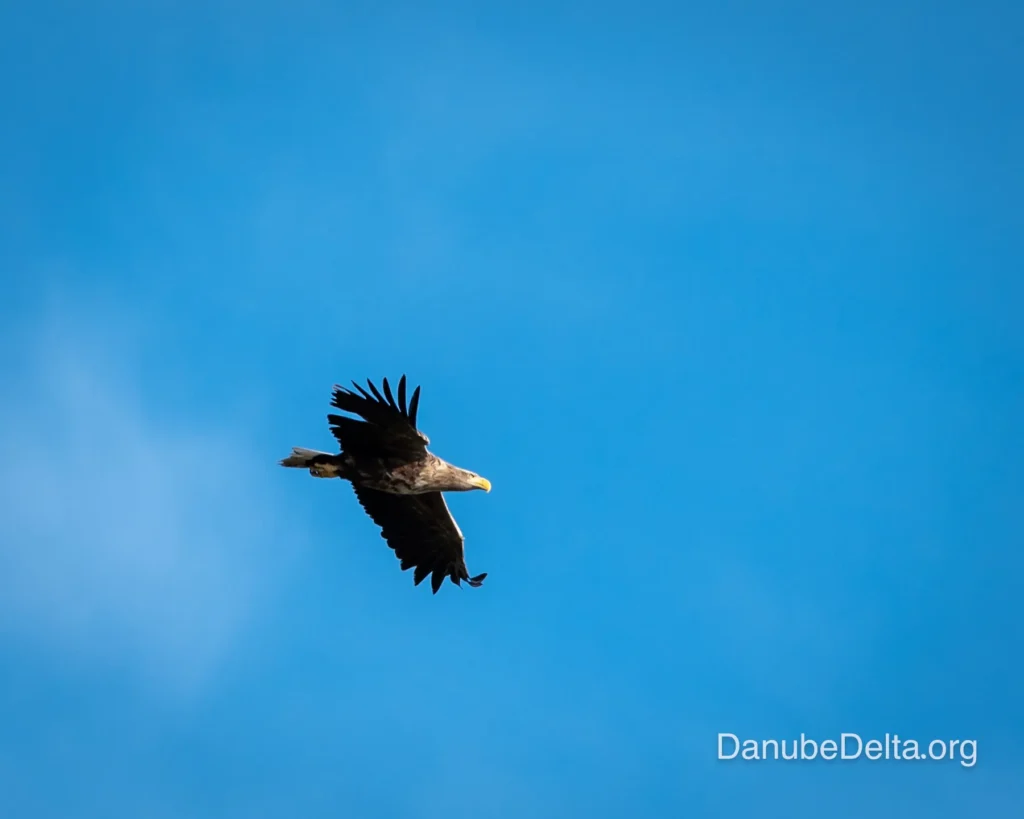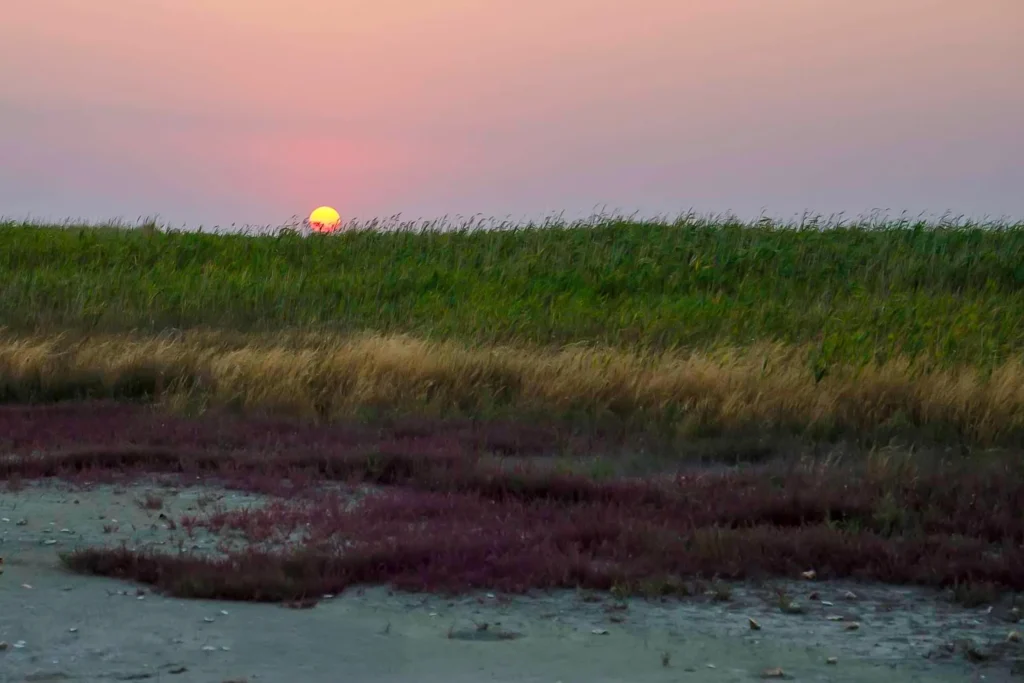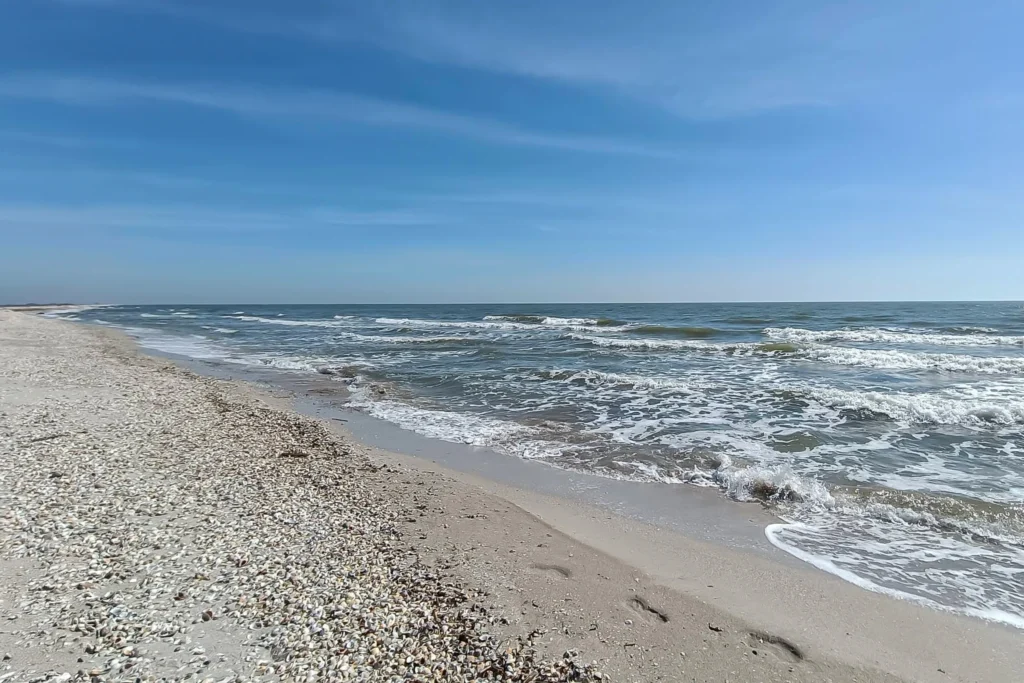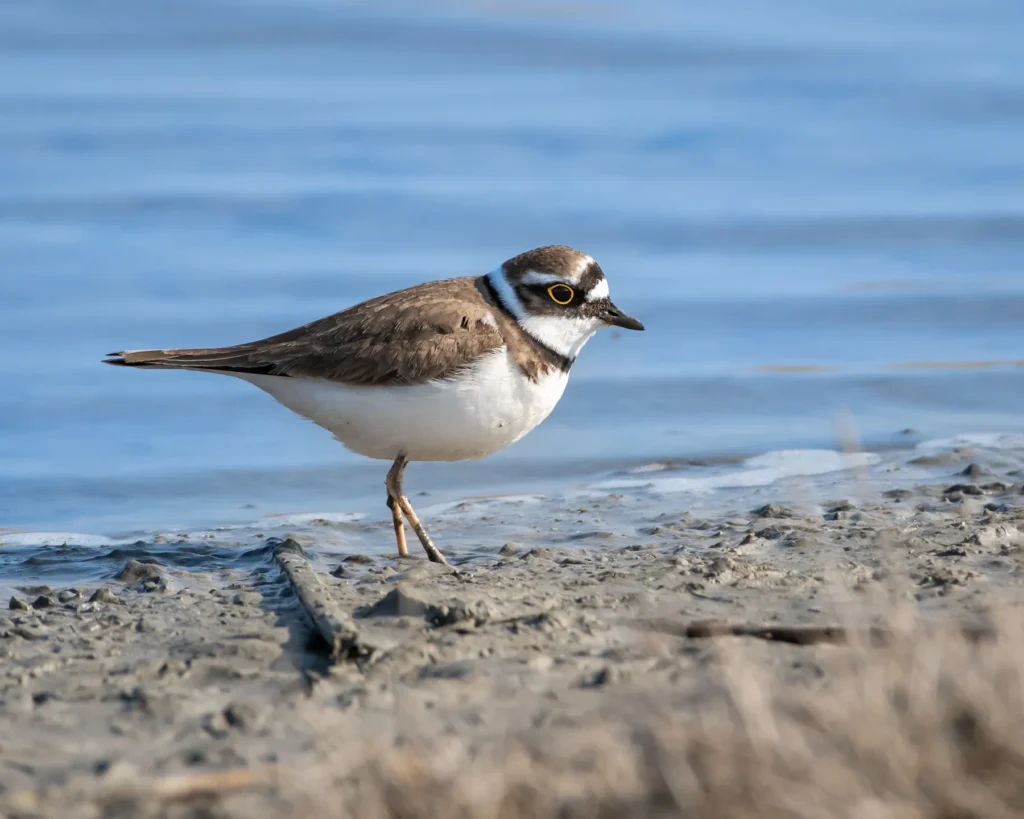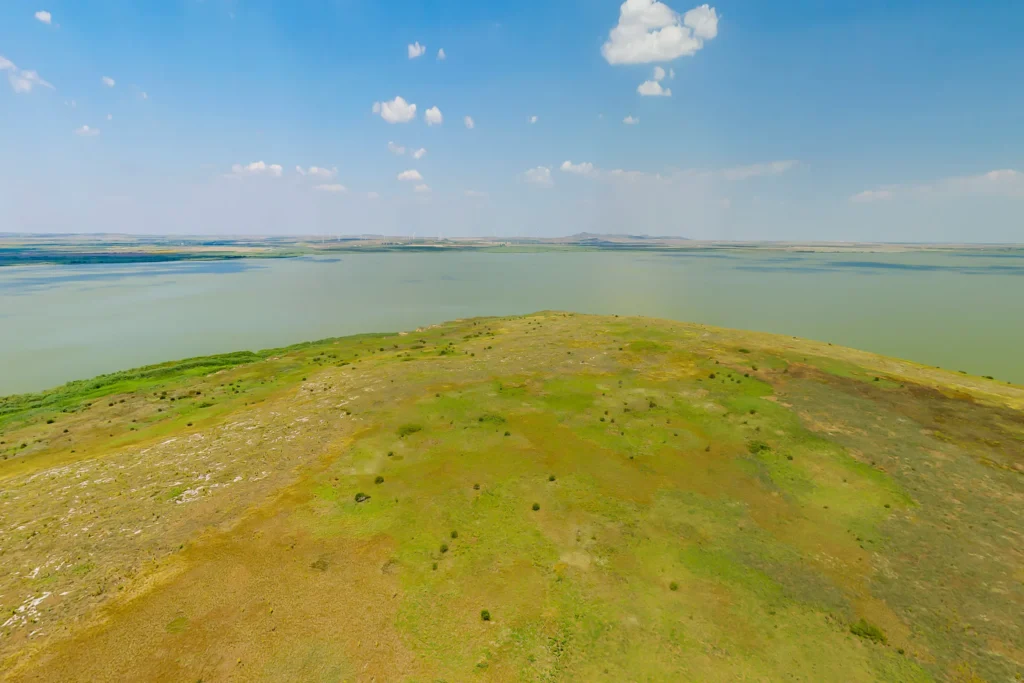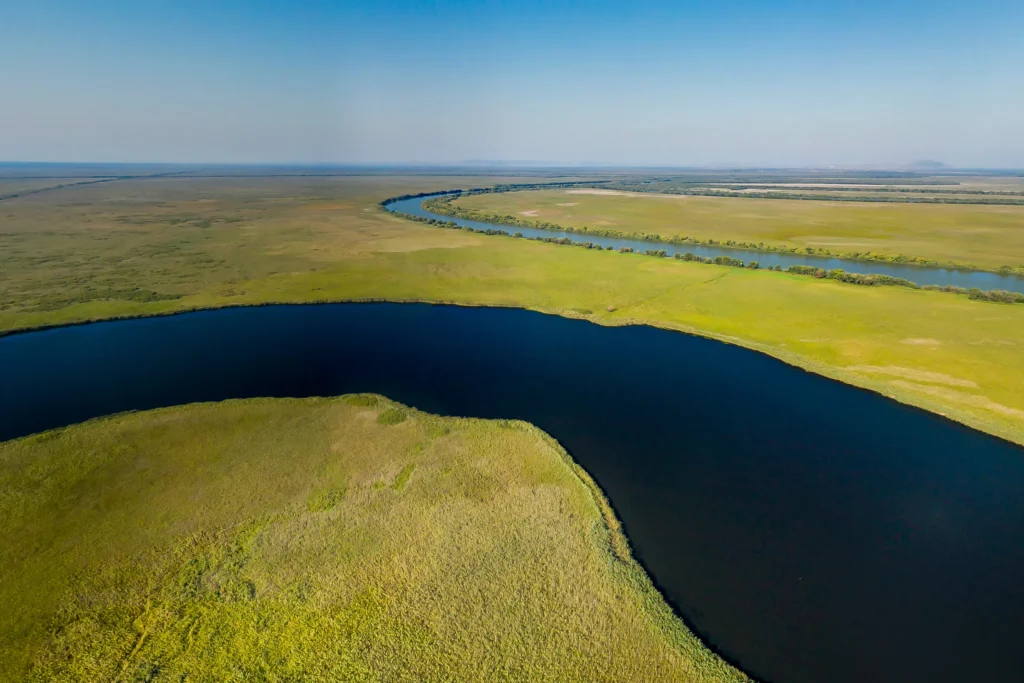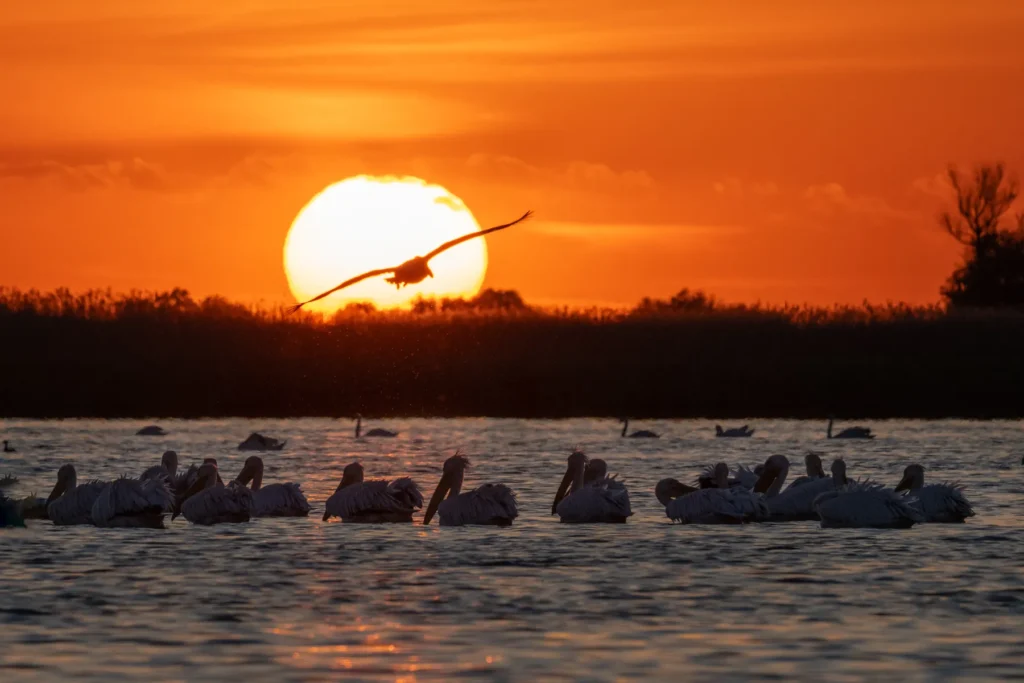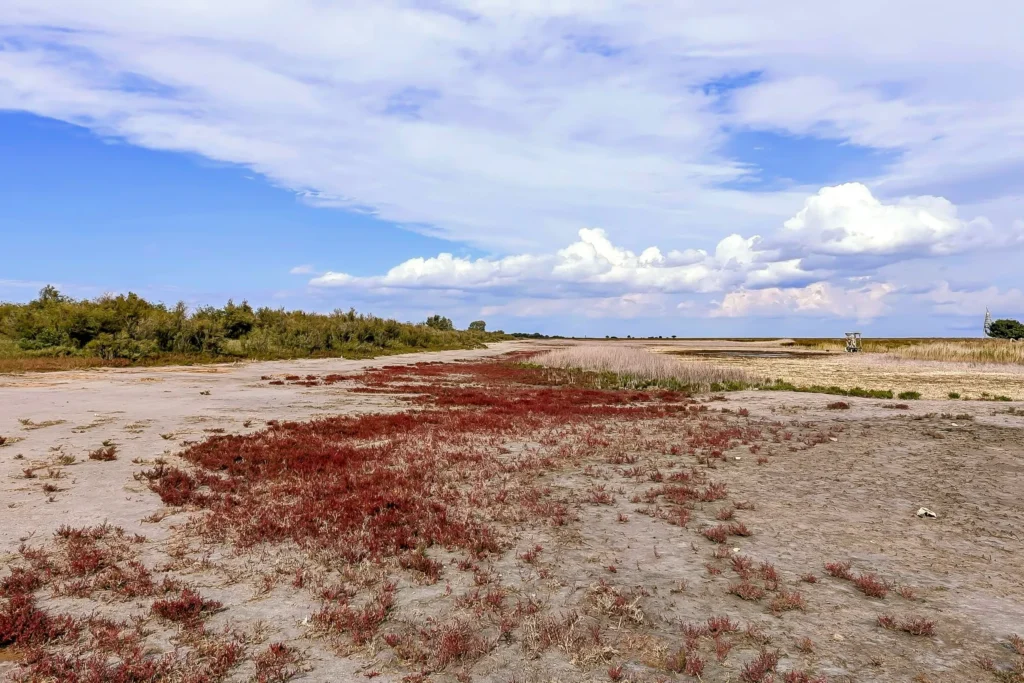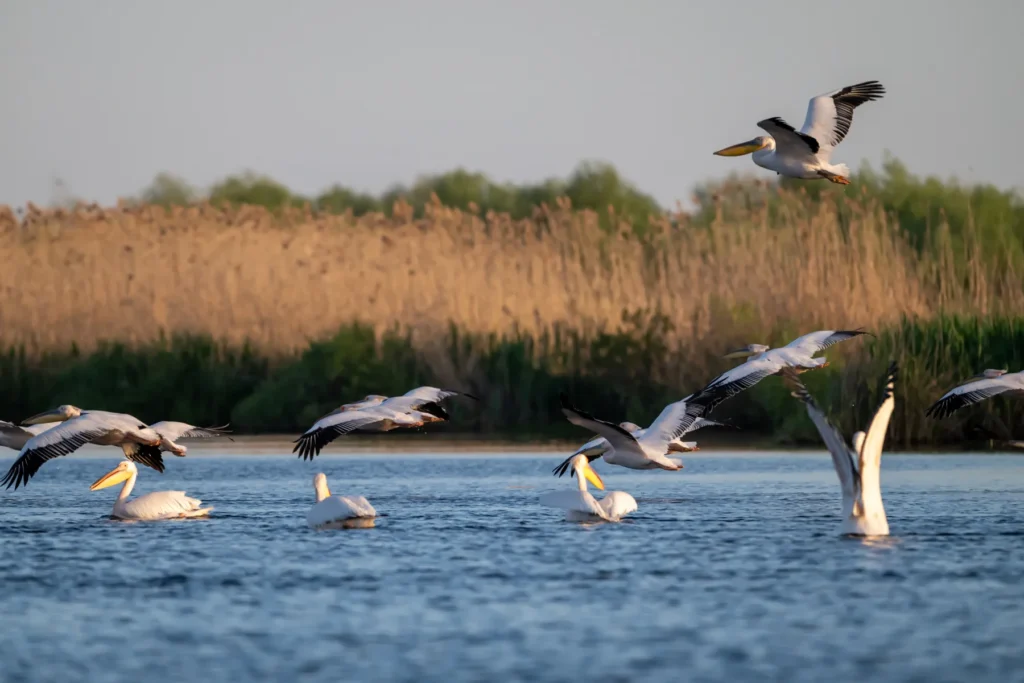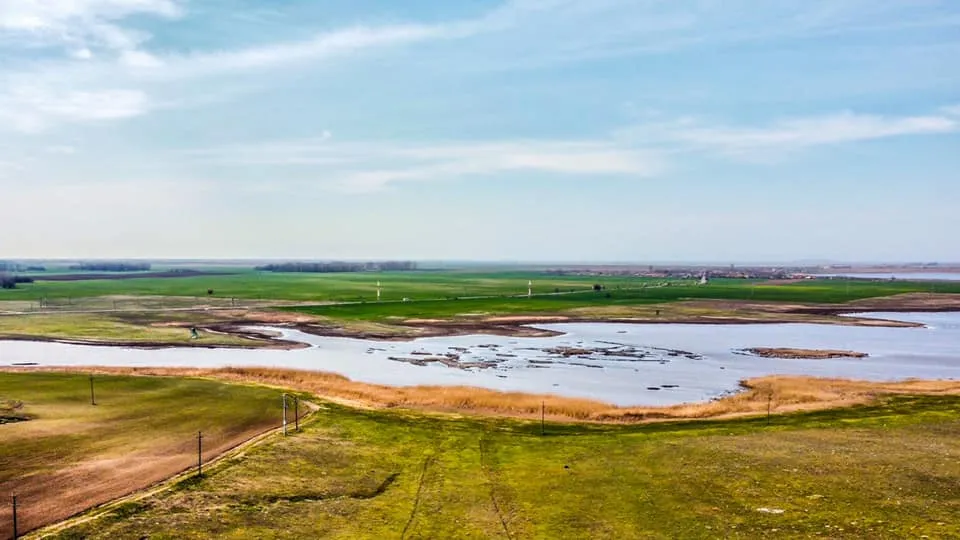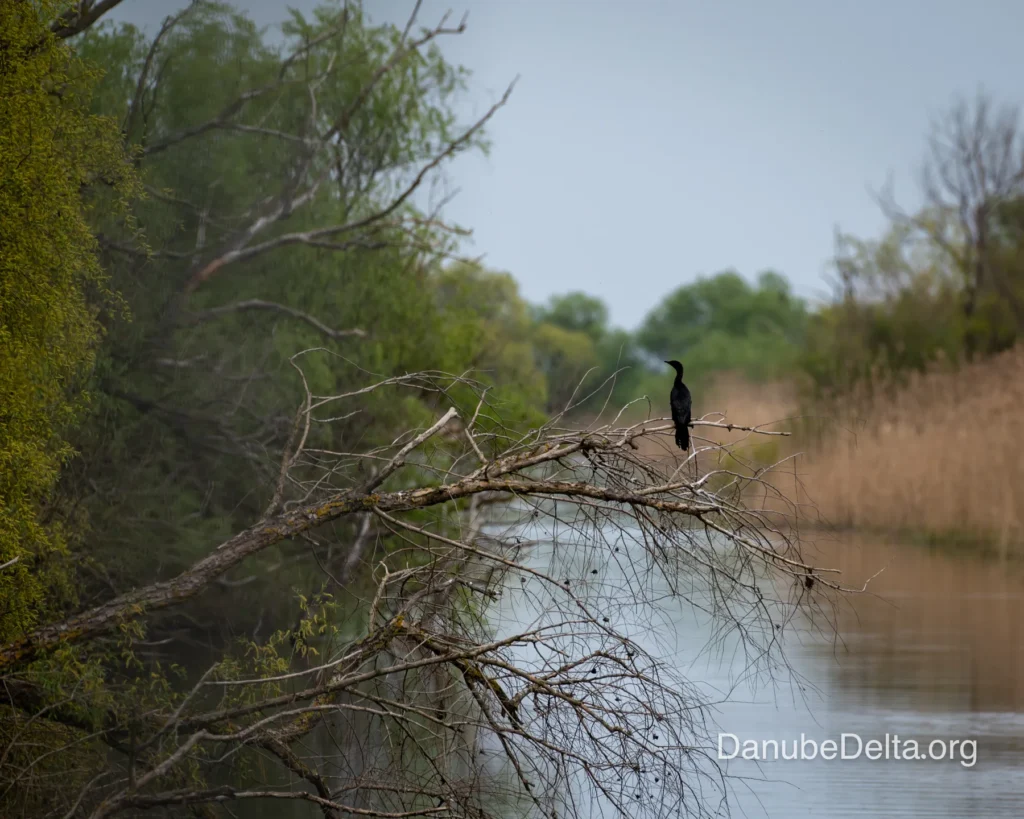Cap Doloşman, a strictly protected area in the Danube Delta
Cap Doloşman - Danube Delta
Cap Doloşman: A Natural and Historical Jewel at the Gates of the Danube Delta
Introduction: Discover Cape Doloşman- Where Nature Meets History
Doloșman Cape, also known as Doloșman, is an area of exceptional importance in the Romanian landscape, harmoniously combining ecological value with a rich historical heritage. Situated in south-eastern Romania, this protected area offers a unique perspective on geological evolution, remarkable biodiversity and millennia of human presence. It is the only rocky cliff on the Romanian coast, a distinctive geological feature that has served as a foundation for the cultural and historical development of the region.
From its official status as a strict nature reserve to its crucial role for migratory species and the ancient remains of the city of Argamum, Cape Dolosman is a destination that invites exploration and a deep understanding of the interconnections between nature and culture. Its significance is profound because its value is not simply the sum of its natural and historical components, but is manifested in a synergy in which the natural landscape has shaped and sustained historical development and the ancient presence adds layers of meaning to the landscape. This interdependence underlines the need for an integrated approach in conservation efforts, simultaneously targeting both natural and archaeological heritage.
Official Status and Legal Framework
Doloșman Cape has a strict protected status, reflecting its national and international ecological and historical importance.
The area is categorised as a strict nature reserve, corresponding to IUCN Category Ia, which indicates a regime of maximum protection with minimum human intervention for the conservation of ecosystems and species. It is an avifaunal, floristic and faunal reserve, recognising the exceptional biodiversity of birds, plants and animals in the area.
The area was originally established in 1961, but was officially declared a protected area by Law No. 5 of 6 March 2000, published in the Official Journal of Romania, No. 152 of 12 April 2000. This legislative evolution, with a period of almost four decades between the initial establishment and the formal legal declaration, suggests a maturation of environmental policies in Romania. Its formal recognition by national law in 2000 indicates an integration into a more robust protection framework, probably influenced by alignment with European and international environmental standards. Its CDDA (Common Database on Designated Areas) code is 31713.
From an administrative point of view, Capul Doloșman is located in the municipality of Jurilovca, Tulcea County. The area is an integral part of the Danube Delta Biosphere Reserve (DDBBR). The Administration of the Danube Delta Biosphere Reserve (ARBDD) is the institution responsible for the administration and management of the entire perimeter of the DDBBR, including Cap Doloșman. It is important to note that the archaeological site of Orgame/Argamum, although located within the perimeter of the Danube Delta Biosphere Reserve, currently has an unclear legal status. This overlapping of protection regimes (natural and cultural) can generate complexities in management, emphasising the need for integrated policies to ensure the holistic conservation of both types of heritage.
The inclusion of Cap Doloșman in the Danube Delta National Park (which is a biosphere reserve) and on the UNESCO World Heritage List emphasises its global recognition and exceptional importance. This layered protection, from the national to the international level, confirms the immense value of the area, but also points to potential challenges in coordinating the various legal and administrative frameworks.
Table 1: Official Status and Administrative Details Capul Doloșman
| Criteria | Detail |
| Official Status | Strict Nature Reserve |
| IUCN categories | Go to |
| Type Reservation | Birdlife, Flora, Fauna |
| Year of Foundation | 1961 |
| Year of Legal Declaration | 2000 |
| Normative Act | Law No 5 of 6 March 2000 |
| Administering Institution | Administration of the Danube Delta Biosphere Reserve (ARBDD) |
| Inclusion in | Dan Danube Delta Biosphere Reserve (DDBBR), UNESCO World Heritage Site |
Geographical Features and Landscape
The Doloșman Cape is characterised by a spectacular landscape, marked by an imposing rocky cliff and its proximity to the vast Razim-Sinoe lagoon complex.
The protected area is located in Tulcea County, Romania, in the eastern part of Jurilovca village, on the administrative territory of Jurilovca commune. Its geographical coordinates are 44°45′44′44″N 28°55′45″E and the nearest town is Babadag. In antiquity, the historian Herodotus referred to the area as Orgamon, a cape of Scythia Minor on the shore of Pont Euxin (Black Sea). Today, Cape Dolosman overlooks the waters of the later Razelm Liman. This major geomorphological transformation, from a promontory directly overlooking the Black Sea to one dominating a freshwater limestone headland, is the result of post-glacial geological processes and the sedimentation of the Danube, which profoundly altered the local ecosystem. Understanding this dynamic history is essential to appreciate the present-day ecological characteristics of the area and its unique position as a former coastline now 'inland' inland from the sea.
The nature reserve covers 125 hectares. The archaeological site of the Orgame/Argamum fortress, an integral part of the area, covers approximately 120 hectares or 100 acres.
From a geological point of view, Dolosman Cape is the only rocky cliff on the Romanian coast, offering a high and rocky landscape similar to Kaliakra in Bulgaria. This distinctive geological formation is composed of horizontal layers of Miocene-Sarmatian limestone, covered with thick layers of Quaternary loess. Upper Jurassic (Barremian) sandstones, marls and limestones occur at the base of the head. The coastal plateau above the head, with altitudes of 85-175 m, has a marine abrasion terrace of 55-85 m. The geological uniqueness of the cliff is not just a natural curiosity; it was a determining factor in the choice of the site for ancient human settlement, offering natural protection and a strategic position. It is this intersection that makes Cape Dolosman a site of exceptional value, where conservation must address not only the ecosystems but also the geological and archaeological integrity as a whole.
The area offers an almost 300-degree view of the Razim Lagoon, the Black Sea and the hills of Dobrogea. The Razim-Sinoe lagoon complex, together with other limanuri, are recent post-glacial formations, resulting from the accumulation of sand and alluvium from the Danube after the stabilisation of the Black Sea level about 7000 years ago.
The accessibility to the Doloșman Cape is ensured by the county road DJ229P, which connects Jurilovca with the reserve. The road from Jurilovca to the fortress is 6 km long, the first 4.5 km of it is asphalted up to a car park. The most beautiful view of the rocky cliff is from the water in the early morning hours, when it is bathed in sunshine.
Biodiversity: Remarkable flora and fauna
As a strict nature reserve, Cape Doloșman is home to an impressive biodiversity of rare and endemic species and is of particular importance for birdlife.
Flora: The vegetation consists of rare floristic elements, including southern-continental and xerozoophilous species. Notable species include Centaurea jankaeon the IUCN Red List, and Centaurea tenuiflora. Also present are sânziana (Galium humifusum), carnation (Dianthus pseudarmeria) and cochaci (Astragalus vesicariusThe area is important for the conservation of xerophytic vegetation, characteristic of steppe areas on erosion remnants. Species of Community interest such as Euphorbia seguieriana and Trapa natans have been identified and are well represented along the coastline Crambe maritima and Stachis maritima. Read more, Kali tragus sausage, Suaeda splendises, Lycoppsis arvensis orientalis and Lolium multiflorum were first mentioned in the RBDD for the first time after 1990, and Suaeda confused was first reported in Romania in this area.
Fauna (General): Fauna diversity is also remarkable. More than 100 insect species have been recorded in the coastal area, including an endemic species, the cockroach Prosocuris phelandrii. In terms of fish fauna, at least 30 species of fish have been identified, one of them, Knipowitschia cameliae, described scientifically for the first time, and 10 species are common to the Delta. Amphibian and reptile species are represented by large populations. The house snake (Natrix tessellata) in large populations at the base of the cliff, the Balkan green lizard (Lacerta trilineata dobrogica) in shrubs and tall grasses, and the evil snake (Coluber caspius) on the plateau and cliff crevices. Of the 13 mammal species identified, 8 are common, including the steppe ferret. This concentration of rare, endemic or newly-discovered species in a relatively small area emphasises the status of the Doloșman Cape as a biodiversity hotspot, justifying its strict nature reserve status and making it a natural laboratory for scientific studies and a focal point for conservation efforts.
Ornitofauna (Birds): Cape Dolosman is an avifaunal reserve. The area is of particular ornithological value as a feeding and roosting site for many birds, including terns, red-breasted geese, pelicans, ducks and black-necked stilts. Of the 70 or so bird species specifically recorded at Cape Dolosman, 9 are nesting birds: swallow, marsh lapwing, marsh sparrow, field sparrow, common tern, blue gull, red kite, little tern, cuckoo and owl.
Red-necked goose (Branta ruficollis) is a vulnerable species (VU) according to its conservation status. It winters in the north-western Black Sea, including in Romania, on lakes in the south and south-east of the country, between October and March. The global population is estimated at 44,000-56,000 individuals, and in Romania it overwinters between 9,000 and 20,000 individuals. It is important to note that red-breasted geese do not nest in Romania.
Pelicans (common and crested) are present in the area for foraging and resting. The crested pelican (Pelecanus crispus - Dalmatian pelican) is a rare and vulnerable species. Although they find ideal foraging conditions in the Danube Delta, the nesting colonies of crested pelicans are located in other strictly protected areas of the Delta, such as Ceaplace Island, not at Capul Doloșman. This distinction is crucial to understanding the specific ecological function of Cap Doloșman: the area acts predominantly as a vital staging and feeding point for a wide range of migratory birds, providing critical resources during long journeys, while its role as a nesting site is more limited to certain species. This nuance is fundamental to effectively targeting conservation efforts and educating the public about the specific importance of each area in the RBDD.
Crucial Ecological Role for Migratory Species
Capul Doloșman plays a vital role in the ecological network of the Danube Delta and, implicitly, in the European bird migration corridor.
The area is designated as a Special Avifauna Protection Area (ROSPA0031). This classification has as its main aim the conservation, maintenance and, where necessary, restoration to a favourable conservation status of species and habitats specific to wild migratory birds, as referred to in the Birds Directive. Capul Doloșman is part of the "Wetland of International Importance (Danube Delta - Ramsar521)", which emphasises the commitment to the protection and conservation of wetland-specific biological diversity. The area is of particular ornithological value as it is a key staging point for many birds such as terns, red-necked geese, pelicans, ducks and black-necked stilts.
This demonstrates that the Choloșman Cape is not only locally or nationally important, but is a critical node in a pan-European or even Eurasian migratory corridor. The health and integrity of this site directly influences the survival rates of migratory bird populations, especially those with poor conservation status, providing vital resources for rest and recovery during exhausting journeys. This gives it international relevance in conservation efforts.
An eloquent example is its role for the red-breasted goose (Branta ruficollis), an iconic species for the region and categorised as vulnerable. It winters in the north-western Black Sea, and Romania, through areas such as Cape Dolosman and the south-eastern lakes, is home to a significant number (between 9,000 and 20,000) of the global population. The distance between the nesting areas in the Siberian Arctic tundra and the wintering quarters in Dobrogea exceeds 4 000 kilometres, making roosting and feeding sites such as Cap Doloșman absolutely essential for the survival of the species.
The ecological value of Chub Head for migratory birds is intrinsically linked to the health and connectivity of the entire wetland complex (Razim-Sinoe and other regional lakes). Degradation of one part of this system (e.g. water pollution, loss of habitat) could have cascading effects along the entire flyway, affecting bird populations far beyond the immediate vicinity of the Chub Head. This underlines the need for a holistic, landscape-scale approach to conservation, recognising the interdependence of different protected areas and their common ecological functions.
Threats and Conservation Efforts
The fragile ecosystem of Cap Doloșman faces various threats, but sustained conservation efforts are underway, coordinated by the Administration of the Danube Delta Biosphere Reserve (ARBDD) and its partners.
Ecosystem Pressures: Threats to Chub Head are multiple and interconnected. Among direct human activities, the burning of leaves and dry plant debris is a prohibited activity, with negative consequences for air quality and degradation of fertile topsoil. The fragmentation of habitats by 'roads to the beach' and the destruction of vegetation cover, with little chance of recovery if pressure continues, also indicate a negative impact of uncontrolled tourism and car access. Travelling by high-powered boats (over 50 hp) at high speeds, well above the existing depth in the lakes and canals in the area, also contributes to habitat degradation.
There are also specific threats to birds, such as the red-throated goose. These include fishing activities on lakes where the birds spend the night and driving them off agricultural land where they feed. Another significant threat is the use of treated seeds and toxic fertilisers on feeding areas. In addition to local anthropogenic pressures, the negative impacts of climate change on biodiversity are recognised. Higher temperatures in summer lead to degradation of water quality (lower dissolved oxygen, eutrophication, algal blooms) and changes in aquifer levels can negatively affect the hydrological balance in wetlands.
Conservation Projects and Measures: To counteract these pressures, the Administration of the Danube Delta Biosphere Reserve (ARBDD) is a leader in projects aimed at "increasing the degree of protection and conservation of biodiversity and restoring degraded ecosystems". The ARBDD works closely with prestigious research institutions such as the National Institute for Research and Development "Danube Delta" - Tulcea, the "Danube Delta" National Research and Development Institute - Tulcea, the "Danube Delta" National University "Danube of the Lower Danube" - Galati, the "Grigore Antipa" National Institute for Marine Research and Development - Constanta and the National Institute for Marine Geology and Geoecology - Tulcea.
The Management Plan of the Danube Delta Biosphere Reserve, which includes Capul Doloșman, sets out conservation objectives and minimum measures necessary to avoid habitat deterioration and species disturbance. Specific conservation measures include improving habitat characteristics by restoring the species composition of characteristic plant associations (e.g. habitat expansion for
Centaurea jankae). It also regulates grazing in areas of sensitive species habitats and implements strict rules for tourism activities near or in areas with species habitats to minimise negative impacts.
This demonstrates that protecting the Chub Head requires a complex and integrated approach that goes beyond simple bans. It requires a deep scientific understanding of the interactions between stressors and the ecosystem, as well as effective coordination between authorities, researchers and local communities. Long-term conservation success depends on the ability to implement adaptive solutions that simultaneously address both direct and global change-induced pressures. Tourism, while beneficial for local economic development and public awareness, poses a significant threat to fragile ecosystems if not properly managed. The fact that tourism regulation is an explicit component of conservation plans indicates a recognition of this tension by the authorities and an active effort to strike a balance, promoting responsible and low impact tourism.
Tourist Access and Exploration Rules (ARBDD Regulations)
In order to ensure a responsible and sustainable visit to Capul Doloșman and the entire Danube Delta Biosphere Reserve, the Administration of the Danube Delta Biosphere Reserve (ARBDD) has established clear rules for access and exploration.
Permits Required: Access to the perimeter of the RBDD, including the Chubby Cape, requires a tourist access permit. Specific permits are required for the use of boats and motor vehicles inside the reserve. Recreational/sport fishing within the perimeter of the RBDD requires a special fishing permit, issued by the ARBDD, in addition to the general access permit. It is important to note that ANPA (National Agency for Fisheries and Aquaculture) licences are not valid in the RBDD.
Fees and Exemptions: The tourist access permit has different rates: 5 lei/person/day, 15 lei/person/week and 30 lei/person/year. For boats, the fee is 100 lei/boat/year or 20 lei/boat/day. There are categories of people exempt from the fee who can get a free licence. These include children, schoolchildren, students, pensioners, war veterans, former political prisoners, descendants of martyred and wounded heroes of the December 1989 Revolution, as well as people residing in or neighbouring the RBDD.
How to obtain a licence: Permits can be obtained in several convenient ways: online through the permit purchase application on the ARBDD website (https://permise.ddbra.ro/) ; at the ARBDD headquarters in Tulcea, from the permit issuing machines ; at the ARBDD Information Centres in the localities within the RBDD perimeter (Chilia Veche, Sulina, Crișan) and in Murighiol ; or by SMS to the number 7494, using specific codes for different types of permits (for example,
Specific Exploration Rules: Tourist activities in the RBDD are authorised by the Regulation-Authorisation Service of the ARBDD. Access by ships and boats is done in compliance with H.G. 538/2015.
There are clear prohibitions to protect the ecosystem: tents and caravans are not allowed outside authorised and properly equipped campsites (e.g. there are no authorised camping or parking areas in the Vadu beach area). The car access permit authorises circulation only on public roads within the Reserve perimeter, not outside them. Parking of motor vehicles is only allowed in specially designated areas, and it is forbidden to park road transport vehicles near natural banks, water or reed areas. The circulation of boats and road transport is prohibited in strictly protected areas or outside designated routes, except for control or scientific activities. These access regulations are not mere formalities, but essential management tools to regulate the complex interactions between visitors and the delicate ecosystem of the Delta, aiming to prevent overexploitation of resources and protect sensitive habitats.
Fishing rules: A recreational angler may retain a maximum of 5 kg of fish per day (or a single fish if it weighs more than 5 kg). The maximum quantity of fish carried on departure is 10 kg/fish or 15 kg/family. Fishing for pike, pike-perch, mackerel, catfish and carp is permitted only with immediate release of all catches (catch & release), with the possibility of retaining only one fish per day of a single species.
Tourist Exploration Possibilities at Chubby Cape: Most tourists reach Cape Chubby on the beach and the archaeological site. The lookout point, a kilometre and a half further on, offers an extensive view of the landscape. The best view of the rocky cliffs is from the water in the early hours of the morning. Exploring the ruins of the Argamum-Orgame fortress, an archaeological site of great importance, is a major attraction in the area.
Cape Doloşman - A Destination to Keep and Admire
Cape Dolosman is a remarkable synthesis of natural beauty, ecological importance and ancient history. Its status as a strict nature reserve, essential for biodiversity and bird migratory routes, together with the ancient remains of the Argamum fortress, make it of exceptional national and international value. The area is an eloquent example of how geological and ecological processes have interacted with human presence over millennia, creating a cultural and natural landscape of rare complexity.
Ongoing conservation efforts, coordinated by the ARBDD in collaboration with scientific institutions, are vital to protect this unique heritage from modern threats, from uncontrolled tourist impacts and agricultural pressures to the widespread effects of climate change. Strict access and exploration regulations demonstrate a balanced approach to facilitating responsible visitation while minimising disturbance to sensitive ecosystems.
Visitors are invited to explore Cap Doloșman with respect and responsibility, realising that every action contributes to preserving this jewel for future generations and understanding its crucial role in the Danube Delta and beyond.
Events in the Danube Delta
Accommodation to suit all tastes:
Whether you prefer the cosiness of modern villas, the rustic atmosphere of traditional guesthouses or the adventure of camping, they offer a variety of accommodation options to suit your needs and budget.
